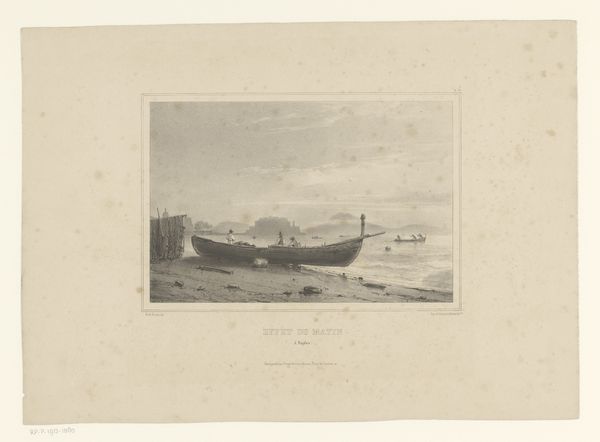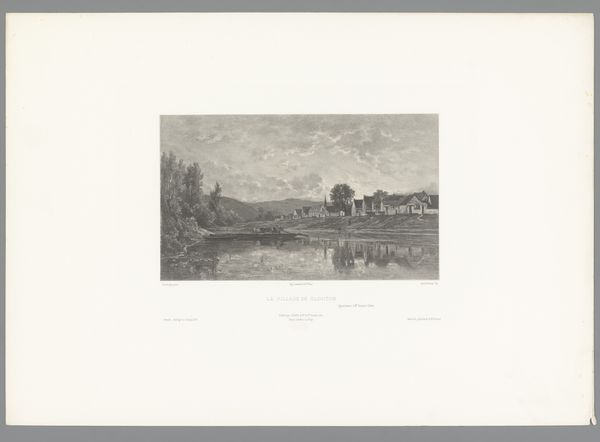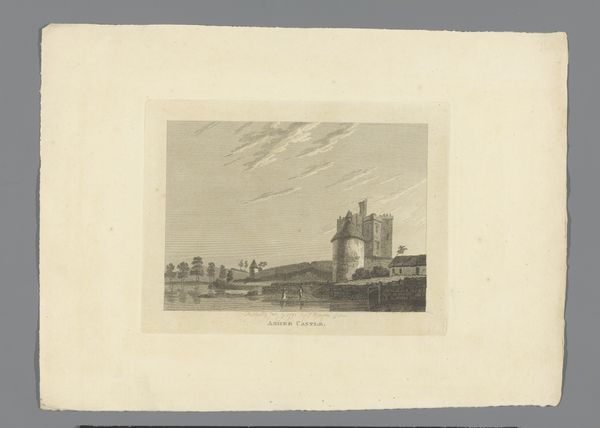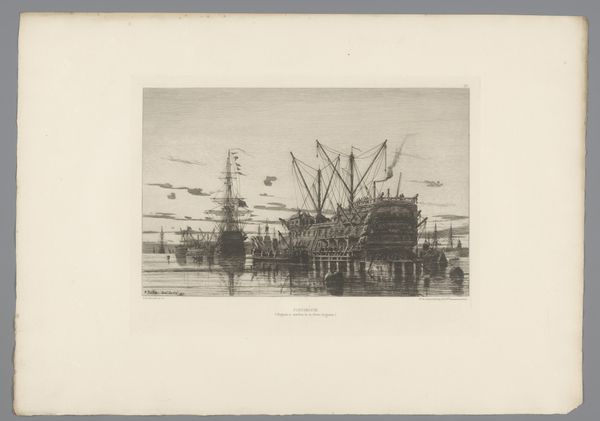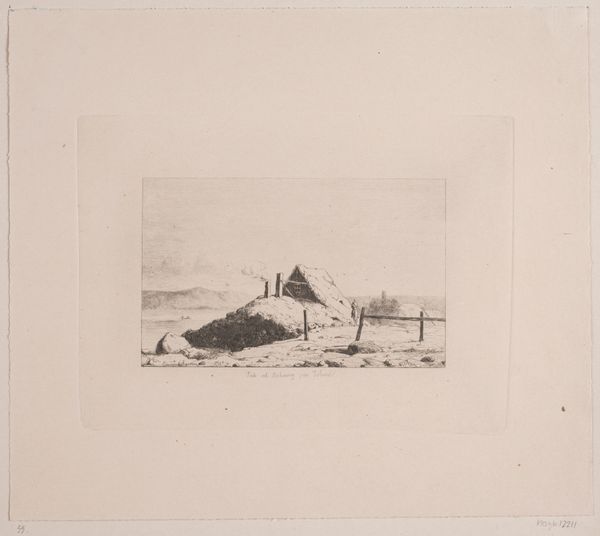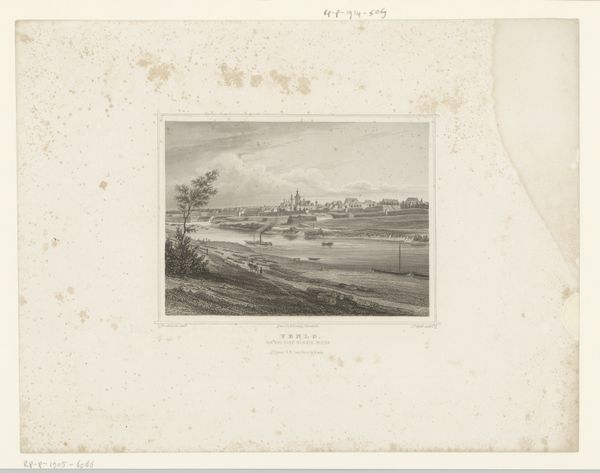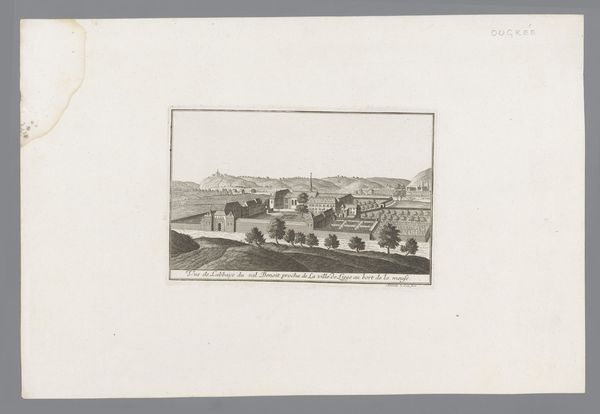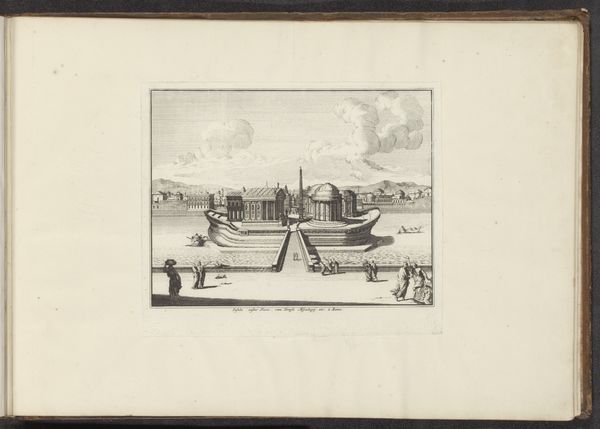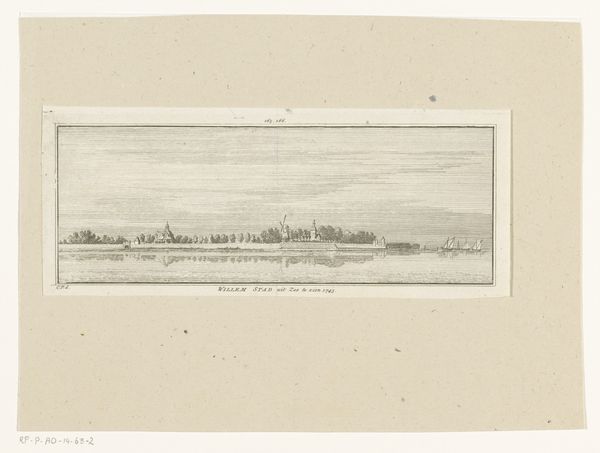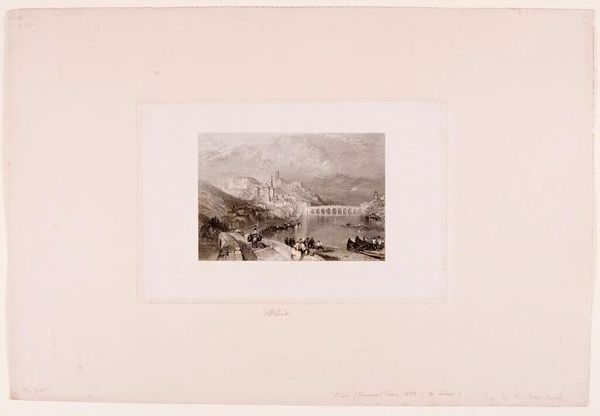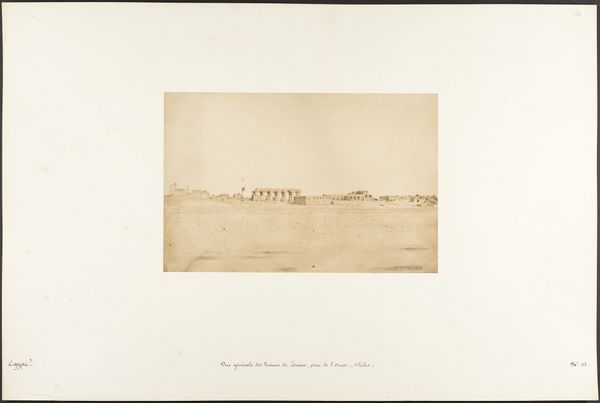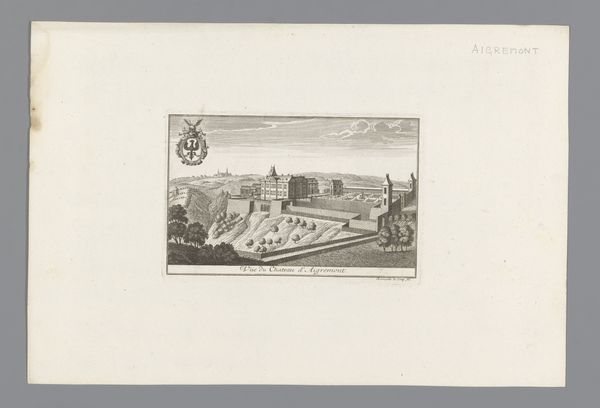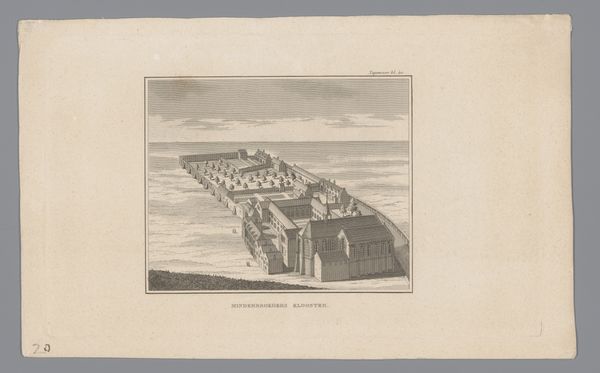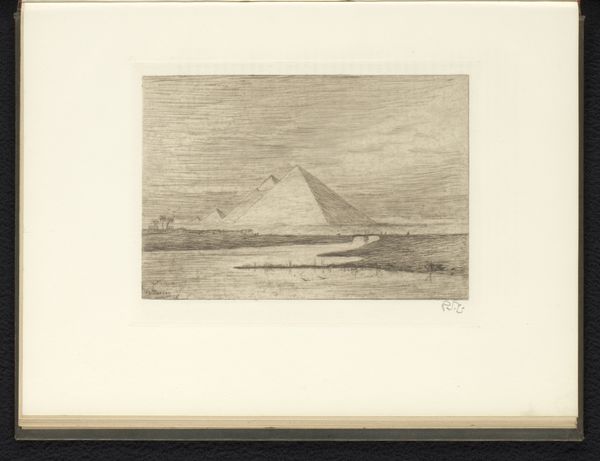
Reproductie van een tekening of prent met een gezicht op de spoorbrug bij Oosterbeek 1880
0:00
0:00
drawing, print, engraving
#
drawing
# print
#
landscape
#
geometric
#
cityscape
#
engraving
#
realism
#
building
Dimensions: height 215 mm, width 278 mm
Copyright: Rijks Museum: Open Domain
Editor: Here we have an engraving from 1880 of the railway bridge at Oosterbeek. It looks like a very precise reproduction, meticulously rendered. The detail in the bridge is impressive, especially considering it's contrasted against what seems to be a rougher foreground of fields and grazing animals. What draws your attention in this print? Curator: I am intrigued by the intersection of industrial production and its impact on the landscape and the workforce. Consider the labor required for the railways’ construction and operation. The print itself becomes an artifact of its time, documenting these material shifts. Editor: So you're looking at not just what's *in* the picture, but what the picture *is*? Curator: Exactly. How was this print produced? Who was it made for? The availability of these kinds of images to a broad public suggests the development of a visual culture deeply connected to industrial expansion. Notice also how the artist presents this 'new' technology within a fairly traditional landscape composition, almost domesticating it. What statement does that make about the reception of modernity during this era? Editor: It's like they're trying to soften the edges of progress, making it fit into an established ideal. Curator: Precisely! The very act of reproducing this image and disseminating it served to promote specific social narratives around progress, labor, and technological advancement. It makes one consider the social role assigned to this 'new' vision, if you will. Editor: That gives me a completely different perspective on the artwork; thanks for sharing that. I wouldn’t have considered the role of labor in the creation of this work! Curator: And I'm glad that we thought about this print, how the image of progress is intrinsically linked to how it’s produced and distributed, transforming both art and society.
Comments
No comments
Be the first to comment and join the conversation on the ultimate creative platform.
